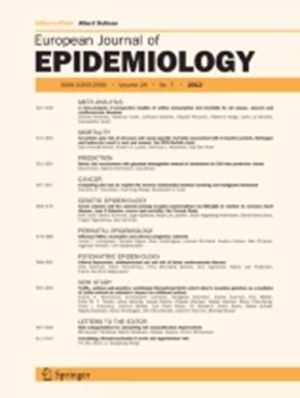Estimating overall survival by combining administrative and hospital death data: a methodological challenge.
IF 5.9
1区 医学
Q1 PUBLIC, ENVIRONMENTAL & OCCUPATIONAL HEALTH
引用次数: 0
Abstract
Since 2019, death data published by the Institute of Statistics and Economic Studies (INSEE) are available, raising questions regarding methodology and potential biases in overall survival analyses. We conducted a simulation study to quantify biases and formulate recommendations for using these data for research. We compared several approaches for estimating overall survival by (i) including only hospital data (EMR), (ii) adding deaths known to the INSEE (EMR_INSEE), or (iii) considering patients without reported death as "alive" (EMR_INSEE_IMP). We conducted simulation studies by varying the mortality risk of the disease studied, rate of loss to follow-up, and death capture rate from INSEE. With the EMR_INSEE approach, the risk of bias appeared to be significant in all clinical scenarios, with a large underestimation of overall survival. On comparing two survival curves, the hazard ratio estimate was highly biased, and type-I and II errors were inflated. With the EMR_INSEE_IMP approach, the risk of bias seemed low and acceptable for clinical situations involving low mortality, especially if loss to follow-up was low. However, some clinical situations seemed to require greater vigilance because of risk of bias when mortality was intermediate or high, especially when the risk of loss to follow-up was high. To our knowledge, this is the first study to assess the impact of using INSEE data in addition to hospital data on vital status. Various simulated scenarios enabled us to quantify the biases involved and thus make recommendations on the various possible strategies for using these data.通过结合行政和医院死亡数据估计总生存率:一个方法学上的挑战。
自2019年以来,统计与经济研究所(INSEE)发布的死亡数据可供使用,这引发了对总体生存分析方法和潜在偏差的质疑。我们进行了一项模拟研究,以量化偏见并制定使用这些数据进行研究的建议。我们比较了几种估计总生存率的方法:(i)仅包括医院数据(EMR), (ii)添加INSEE已知的死亡人数(EMR_INSEE),或(iii)将未报告死亡的患者视为“活着”(EMR_INSEE_IMP)。我们通过改变所研究疾病的死亡风险、随访损失率和INSEE的死亡捕获率进行了模拟研究。使用EMR_INSEE方法,在所有临床情况下,偏倚风险似乎都很显著,对总生存期的估计大大低估。在比较两条生存曲线时,风险比估计存在高度偏倚,i型和II型误差被夸大。使用EMR_INSEE_IMP方法,对于低死亡率的临床情况,特别是随访损失低的情况,偏倚风险似乎很低,是可以接受的。然而,一些临床情况似乎需要更大的警惕,因为当死亡率中等或高时,特别是当随访失败的风险很高时,存在偏倚的风险。据我们所知,这是第一个评估除了医院数据外使用INSEE数据对生命状态影响的研究。各种模拟情景使我们能够量化所涉及的偏差,从而就使用这些数据的各种可能策略提出建议。
本文章由计算机程序翻译,如有差异,请以英文原文为准。
求助全文
约1分钟内获得全文
求助全文
来源期刊

European Journal of Epidemiology
医学-公共卫生、环境卫生与职业卫生
CiteScore
21.40
自引率
1.50%
发文量
109
审稿时长
6-12 weeks
期刊介绍:
The European Journal of Epidemiology, established in 1985, is a peer-reviewed publication that provides a platform for discussions on epidemiology in its broadest sense. It covers various aspects of epidemiologic research and statistical methods. The journal facilitates communication between researchers, educators, and practitioners in epidemiology, including those in clinical and community medicine. Contributions from diverse fields such as public health, preventive medicine, clinical medicine, health economics, and computational biology and data science, in relation to health and disease, are encouraged. While accepting submissions from all over the world, the journal particularly emphasizes European topics relevant to epidemiology. The published articles consist of empirical research findings, developments in methodology, and opinion pieces.
 求助内容:
求助内容: 应助结果提醒方式:
应助结果提醒方式:


